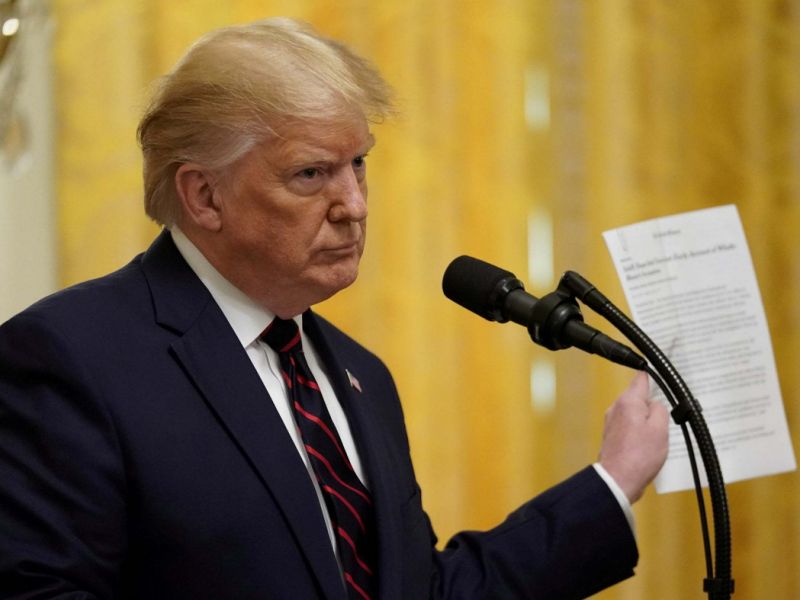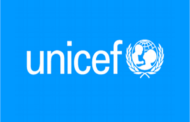- President Donald Trump said there were “very good experts” who predicted the novel coronavirus “would never affect the United States.”
- Those people “got it wrong,” Trump said.
- It’s unclear which experts he was referring to; dozens of public-health officials warned early on of a US outbreak that would severely disrupt daily life.
- Intelligence officials and Obama administration aides also repeatedly sounded the alarm about an impending pandemic, but Trump didn’t take action until weeks after the virus gained a foothold in the US.
- Visit Business Insider’s homepage for more stories.
President Donald Trump said on Tuesday there were “very good experts” who predicted that the coronavirus outbreak “would never affect the United States.”
He made the remark during a White House speech to small-business owners in response to CNN’s Jim Acosta, who asked Trump about the number of confirmed cases in the US passing the 1 million mark. Acosta pointed to Trump’s prediction in February that the number of US cases would go down to zero.
“How did we get from your prediction of zero to 1 million?” Acosta asked.
“Well, it will go down to zero ultimately,” Trump said, adding that the US is “doing more testing than any other country in the world.”
“So, we’re going to show more cases because we’re doing much, much more testing — double anybody else,” he said. “And it will be — at the appropriate time, it will be down to zero like we said.”
Acosta then pressed Trump on how multiple experts said at the time that the number of US cases would go up and there would be community spread of the disease without appropriate social-distancing measures.
Trump pushed back. “Experts — very good experts, very good people too — said this would never affect the United States, it wouldn’t affect Europe, it wouldn’t affect anything outside of China.” he said. “So we were listening to experts, and we will always listen to experts, but the experts got it wrong. A lot of people got it wrong, and a lot of people had no idea it would be this seriou
It’s unclear which experts the president was referring to when he said they “got it wrong” by predicting the virus “would never affect” the US. Dozens of public-health officials warned of a US outbreak in February.
“Ultimately we expect we will see community spread in the United States,” Nancy Messonnier, the director of the National Center for Immunization and Respiratory Diseases at the Centers for Disease Control and Prevention, told reporters during a conference call on February 25. “It’s not a question of if this will happen but when this will happen and how many people in this country will have severe illnesses.”
She added: “We are asking the American public to prepare for the expectation that this might be bad.”
Alex Azar, the secretary of Health and Human Services, told a Senate subcommittee the same day that there would be additional cases of the coronavirus in the US, calling it an “unprecedented, potentially severe health challenge globally.”
Their warnings contrasted sharply with what Trump said at the time. He tweeted on February 24 that the virus was “very much under control” and later insisted that “the whole situation will start working out.”
On Tuesday, Trump pointed to his decision to ban certain types of travel from China on January 31, saying he made the move “well ahead of schedule.”
“So I think we’ve done a great job, in the sense that we were early, I think, by banning China … and banning people coming in who would have been very heavily infected,” he said. “We probably saved hundreds of thousands of lives, so on that, I’m very proud.”
In addition to public-health officials warning of a US outbreak, intelligence officials and Obama administration aides sounded the alarm about an impending pandemic long before the Trump administration took action.
The Washington Post reported on Monday that the president’s daily brief warned about the novel coronavirus at least a dozen times in January and February.
But despite the repeated warnings officials issued in the daily brief, Trump “failed to register” the threat, The Post reported. The president is known to regularly skip reading through the brief, and he doesn’t have much patience even when the information is given to him via oral summaries a few times per week, The Post said.
By the end of January and beginning of February, a majority of the intelligence contained in Trump’s daily briefings was about the coronavirus, The Post reported last month. At the same time that he was getting those briefings, the president was publicly downplaying the risk of the virus.
Some of the warnings came even earlier. Days before Trump’s inauguration, Obama administration officials briefed Trump officials on how to respond to a pandemic, Politico reported. The hypothetical scenario Obama officials presented to the incoming administration bore many similarities to the coronavirus outbreak.
Politico also reported that the Trump administration declined to use a nearly 70-page pandemic playbook that the National Security Council’s health unit put together under the Obama administration. The document instructed federal officials on how to prepare for many of the same obstacles the Trump administration is now facing, including medical-equipment shortages and a lack of coordination.
Then, from January 2019 to August, the Department of Health and Human Services conducted a training simulation about a hypothetical pandemic caused by a disease that bore striking parallels to the novel coronavirus.
In the simulation, federal agencies fought over who was in charge, state officials and hospitals couldn’t figure out which and how much medical equipment was available, and there was no centralized coordination on state lockdowns and school closings.
The team conducting the simulation put together a draft report laying out the roadblocks they discovered in the exercises, but their warnings went unheeded, according to The New York Times.
Business Insider
Got a tip? Email ssheth@businessinsider.com or sonamsheth@protonmail.com.
Read the original article on Business Insider












